Complimentary worldwide shipping on orders over $400 · No import tariffs for most countries
Complimentary worldwide shipping on orders over $400 · No import tariffs for most countries
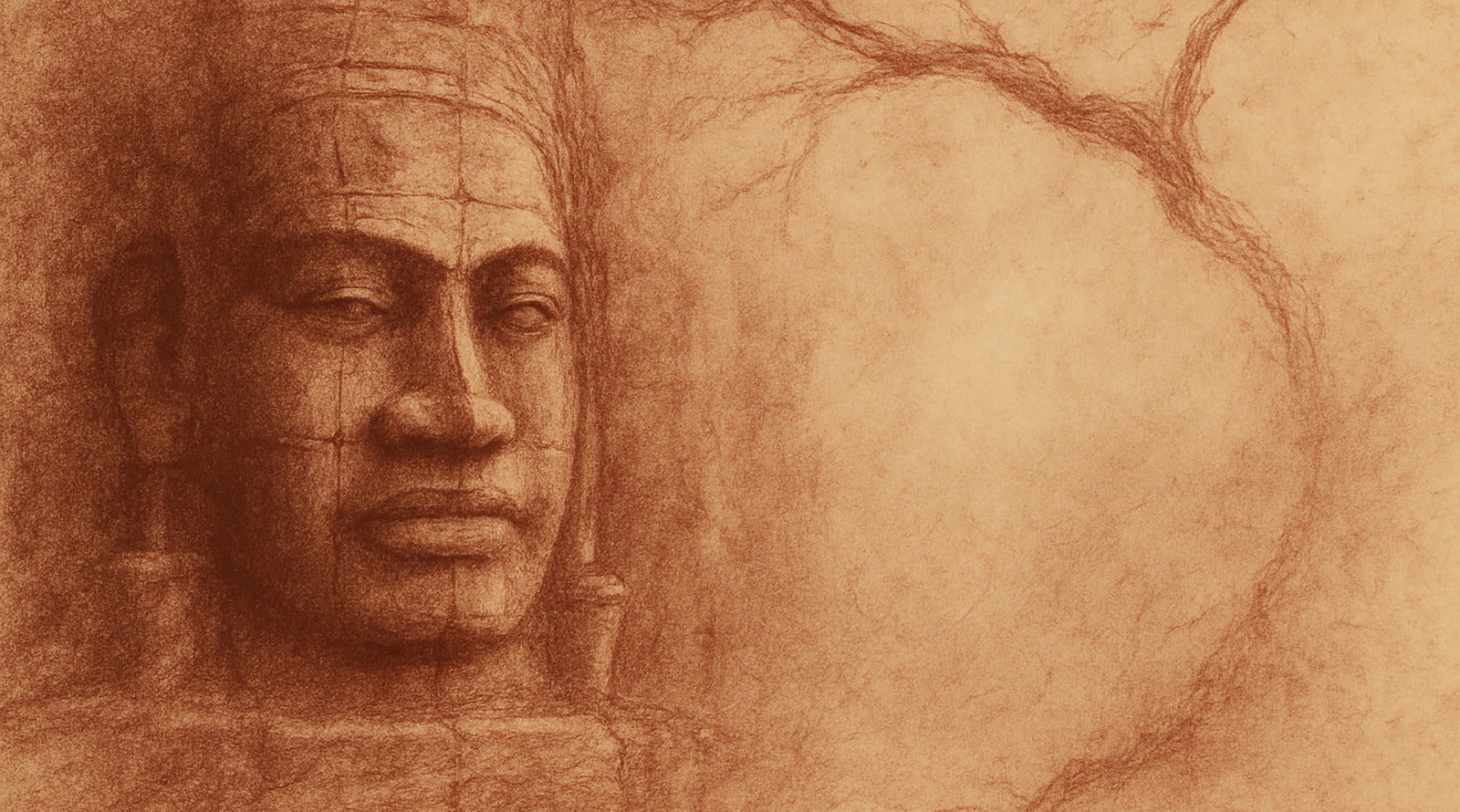
The Silent Gaze of the God Beyond Names
4 min read
Sanctuary of Meaning · Artist’s Journal
Lucas Varro
He watches in silence, facing every realm.
The name has faded—
but the blessing remains.
—from a field note at the Bayon
—
There are places where the sacred reveals itself not through clarity, but through concealment—where presence speaks not in proclamation, but in the unwavering gaze of silence. At the heart of Angkor, rising from the layered sanctity of the Bayon, a multitude of serene faces turn toward the four winds. Vast. Identical. Unblinking. No one can say with certainty who they are.
And perhaps that is the point.
I remember standing beneath one of those towers at dawn. The light was pale and reverent, like breath held between prayers. The face above me did not impose. It did not command. It simply was—immensely present, impossibly still. Not a portrait. Not a symbol. A gaze that had been watching longer than memory.
Stone eyes unblinking
see what passes, and remains—
light without a name.
These are not the gentle Buddhas of Jayavarman’s early sanctuaries, eyes lowered in compassion. These are eyes wide open—neither wrathful nor soft—charged with a knowing beyond doctrine. The square jaw, the full lips, the faint smile: they echo the Bayon style, yet what they embody eludes names. Not Avalokitesvara. Not Brahma. Not the king. Perhaps all of them, perhaps none.

Sentinel of the silent axis—
eyes wide with presence,
watching the world into stillness.
Some say they are Lokesvara, gazing in all directions. Others, the god-king Jayavarman VII immortalized in stone. Others still, Brahma or Vajrasattva, or the fierce tantric guardians whose presence once threaded its way from the Ganges to the Mekong. But none of these names resolve the mystery. Each carries a measure of truth. And each falls quietly short.
It may be we are asking the wrong question.
For these towers are not icons in the traditional sense. They are something more radical—architecture as deity, city as mandala, stone as sovereign presence. The Bayon does not house a god. The Bayon is a god. A mountain of spirit carved from stone, its two hundred faces gazing outward to every horizon. What does it mean, then, for a people to place their spiritual centre not at an altar—but in a gaze?
In the early thirteenth century, that gaze held not peace, but defiance. A silence born not of serenity, but of necessity. Across the northern plains of India, the monastic sanctuaries of Buddhism were burning. Nalanda. Odantapuri. Vikramashila. The dharma’s strongholds fell to flame and sword. Monks who survived fled east—some to Nepal, some to Pagan, some perhaps to Angkor.
Whether they arrived in body or only in spirit, their teachings found root in Jayavarman VII. This was no ordinary king. He built from compassion, but ruled with vision. The Bayon, his state temple, was no mere devotional offering—it was a spiritual defence. An architecture of resistance, raised not only in praise, but in protection.
And so he did not adorn it with soft-eyed Bodhisattvas. He carved faces that see. Faces that watch. Eyes wide open to the suffering of the world, the violence of impermanence, the threat of extinction. These were not ornamental deities. These were sentinels of spirit.
Crowned in diadems. Marked with vajra eyes. Adorned in sacred regalia that transcended sect and school. Yet they are not fierce. They do not snarl or raise weapons. Their power is quiet. Immense. Unshakeable. They have stood through centuries of storm and sun, through desecration and rediscovery, needing no inscription to declare their sanctity.
Because they are not one god—but many. Not many, but a mode of being. Not a name, but a presence.
From above, the Bayon becomes a mandala. From within, it becomes a maze. At its centre sits the Buddha beneath the Naga—a traditional image of state sanctity. But compared to the towers, he is small. The king’s other temples—Preah Khan, Ta Prohm, Banteay Chmar—repeat the form, as if this gaze had become the empire’s very breath.
Some see these towers as linked to the neak ta—local guardian spirits woven into a kind of spiritual cartography. Others read them as divine surveillance, a sacred mechanism of stability. But if they were only guardians, why so many? Why so high? Why so uniform?
I believe Jayavarman carved something deeper:
A god that was not a being, but a stance.
A way of holding the world steady.
A vision of the dharma not as belief, but as gaze.
Tantric texts speak of Vajrasattva—pure awareness before form, a bodhisattva beyond wrath or compassion, a Buddha beyond Buddhas. Radiant. Silent. All-seeing. The uncorrupted one. Not a god to be worshipped, but a presence to be lived beside. Could these faces be his?
Whether or not we name Vajrasattva, or Brahma, or another—the gesture remains. Stone, turned outward. Eyes open. Silence cast in every direction.
And perhaps that is what was most needed then—not a sermon, not a sutra, not even a god. But a gaze. A gaze that could hold a kingdom together as its edges unravelled. A gaze that could stand where language falls silent.
Today the faces remain. Time has softened them. Lichen curls in the corners of their smiles. The lozenges at their brows have faded. Some were erased. Others endure. But the gaze remains. Quiet. Present. Waiting.
Not all gods are meant to be known.
Some are meant to be felt.
—
In the gaze that watches all things,
there is no need for a name.
Also in Library
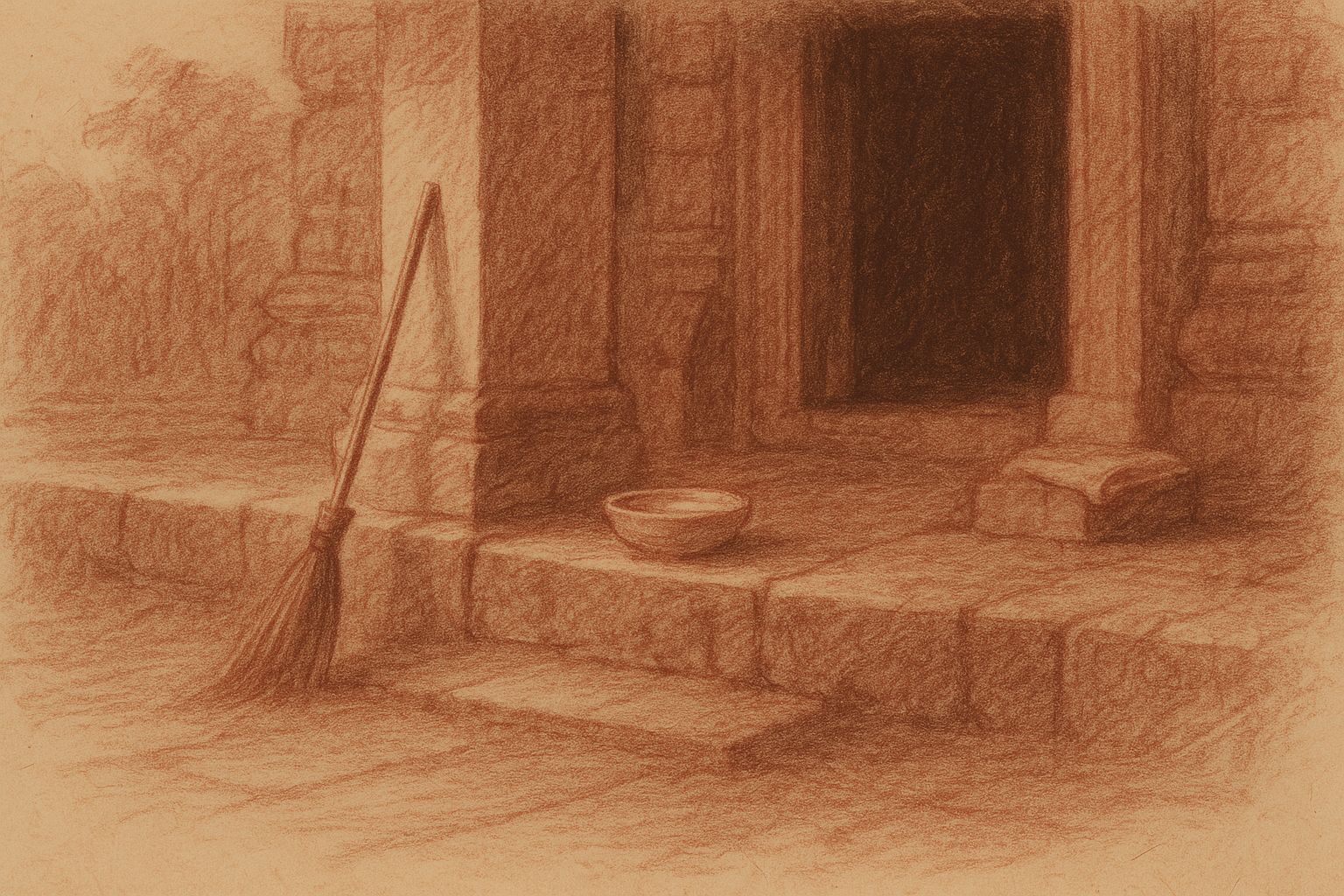
Those Who Keep the Way Open — On the Quiet Guardians of Angkor’s Thresholds
3 min read
Quiet gestures shape the way into Angkor — a swept stone, a refilled bowl, a hand steadying a guardian lion. This essay reflects on the unseen custodians whose daily care keeps the thresholds open, revealing how sacredness endures not through stone alone, but through those who tend its meaning.
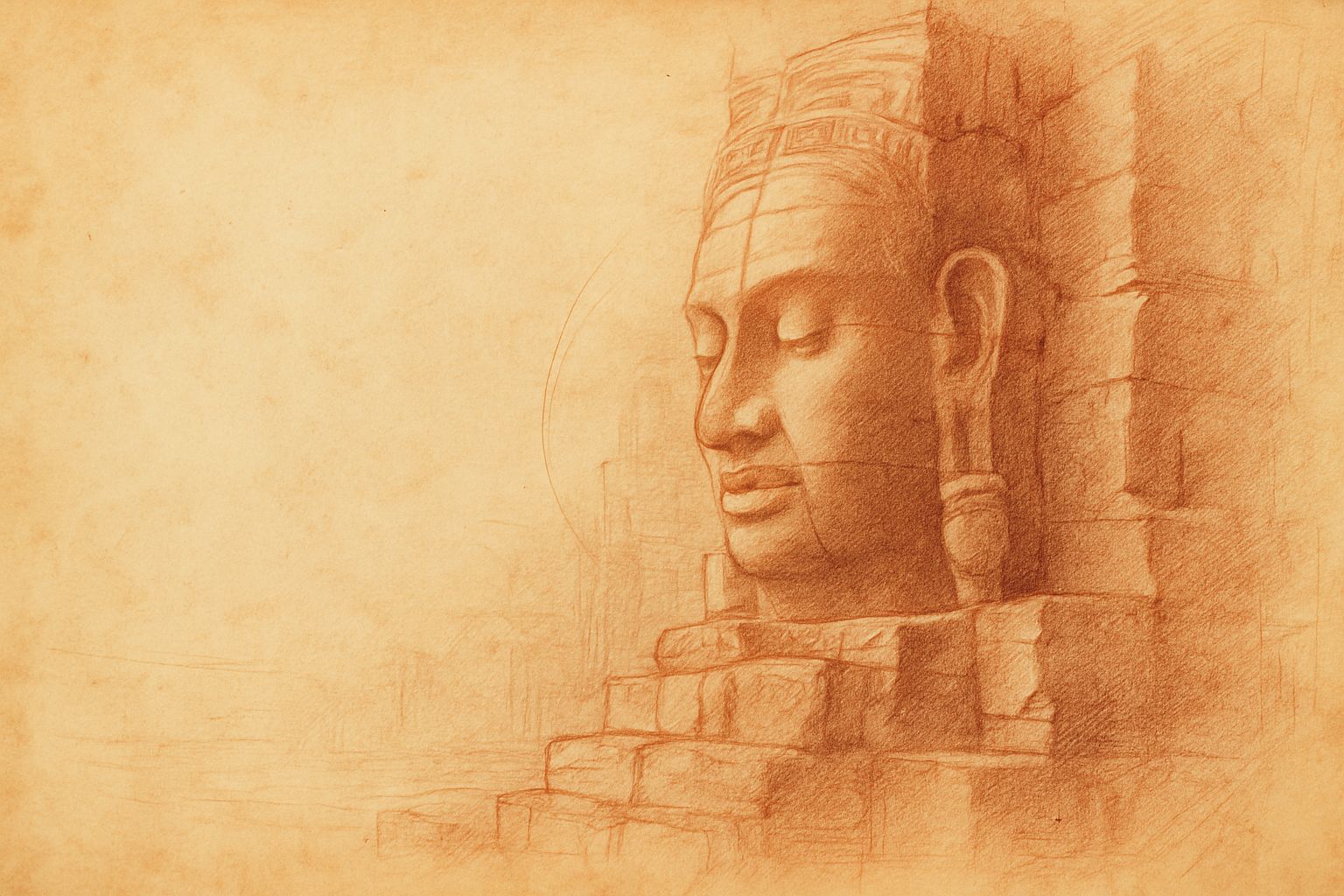
Multiplicity and Mercy — The Face Towers of Jayavarman VII
5 min read
A new vision of kingship rises at the Bayon: serene faces turned to every horizon, shaping a world where authority is expressed as care. Moving through the terraces, one enters a field of steady, compassionate presence — a landscape where stone, light, and time teach through quiet attention.
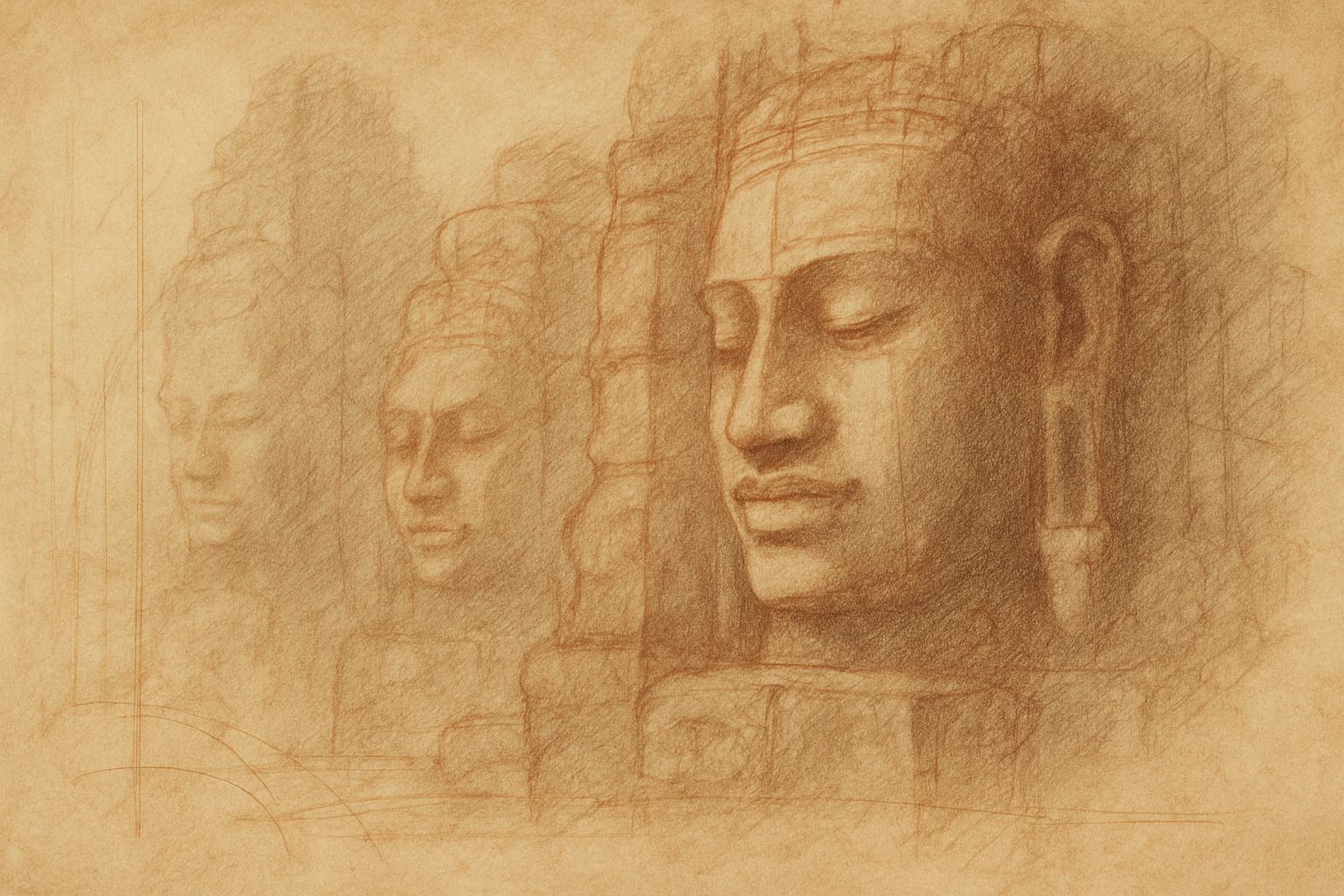
Stone That Dreams
4 min read
Bayon wakes like a mind emerging from shadow. Its many faces shift with light and breath, teaching that perception—and the self—is never singular. In walking this forest of towers, the pilgrim discovers a quiet multiplicity within, held together by a calm that feels both ancient and newly understood.
Bayon Temple, Angkor, Cambodia — 2018
Limited Edition Archival Pigment Print
Edition
Strictly limited to 25 prints + 2 Artist’s Proofs
Medium
Hand-toned black-and-white archival pigment print on Hahnemühle Bamboo — a museum-grade fine art paper chosen for its quiet tactility and reverent depth, echoing the spirit of the temples.
Signature & Numbering
Each print is individually signed and numbered by the artist on the border (recto)
Certificate of Authenticity
Accompanies every print
Image Size
8 x 8 inches (20.3 x 20.3 cm)
Dawn gathers in Bayon’s corridors like water in a stone bowl, cool and unhurried. Two faces emerge—one cloaked in the last breath of night, the other brushed by the first silver syllable of morning. Their exchange seems less carving than thought made visible.
In this suspended hush, centuries contract to the width of a heartbeat. The terrace beneath me belongs to no empire, only to presence: stone inhaling light, exhaling stillness.
I pressed the shutter only when my breathing matched the temple’s. Medium-format black-and-white film accepted the moment’s slow cadence; in the darkroom I polished shadow and glow as one turns prayer beads, until compassion stirred within the grains. Hand-toning followed, gifting each print its own quiet pulse.
This strictly limited edition of twenty-five prints (with two Artist’s Proofs) rests on Hahnemühle Bamboo paper whose warm fibers cradle silver and carbon like earth cradles seed. Signed, numbered, and accompanied by a certificate of authenticity, each piece is a silent threshold of reflection.
May it find the wall where your own silence waits.
To walk deeper into the hush behind this image, click here to enter the Artist’s Journal.
Previously titled ‘Face Towers I, Bayon Temple, Angkor, Cambodia. 2018,’ this photograph has been renamed to better reflect its place in the series and its spiritual tone. The edition, provenance, and authenticity remain unchanged.
Join My Studio Journal
Receive occasional letters from my studio in Siem Reap—offering a glimpse into my creative process, early access to new fine art prints, field notes from the temples of Angkor, exhibition announcements, and reflections on beauty, impermanence, and the spirit of place.
No noise. No clutter. Just quiet inspiration, delivered gently.
Subscribe and stay connected to the unfolding story.
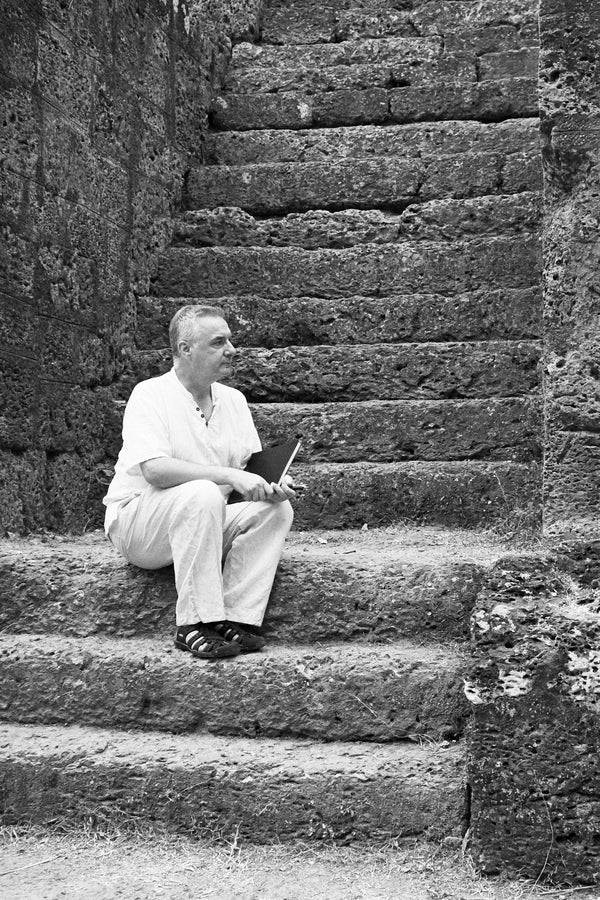
Join My Studio Journal
Receive occasional letters from my studio in Siem Reap—offering a glimpse into my creative process, early access to new fine art prints, field notes from the temples of Angkor, exhibition announcements, and reflections on beauty, impermanence, and the spirit of place.
No noise. No clutter. Just quiet inspiration, delivered gently.
Subscribe and stay connected to the unfolding story.

